For the given incident ray as shown in figure, the condition of total internal reflection of the ray will be satisfied if the refractive indesx of block will be 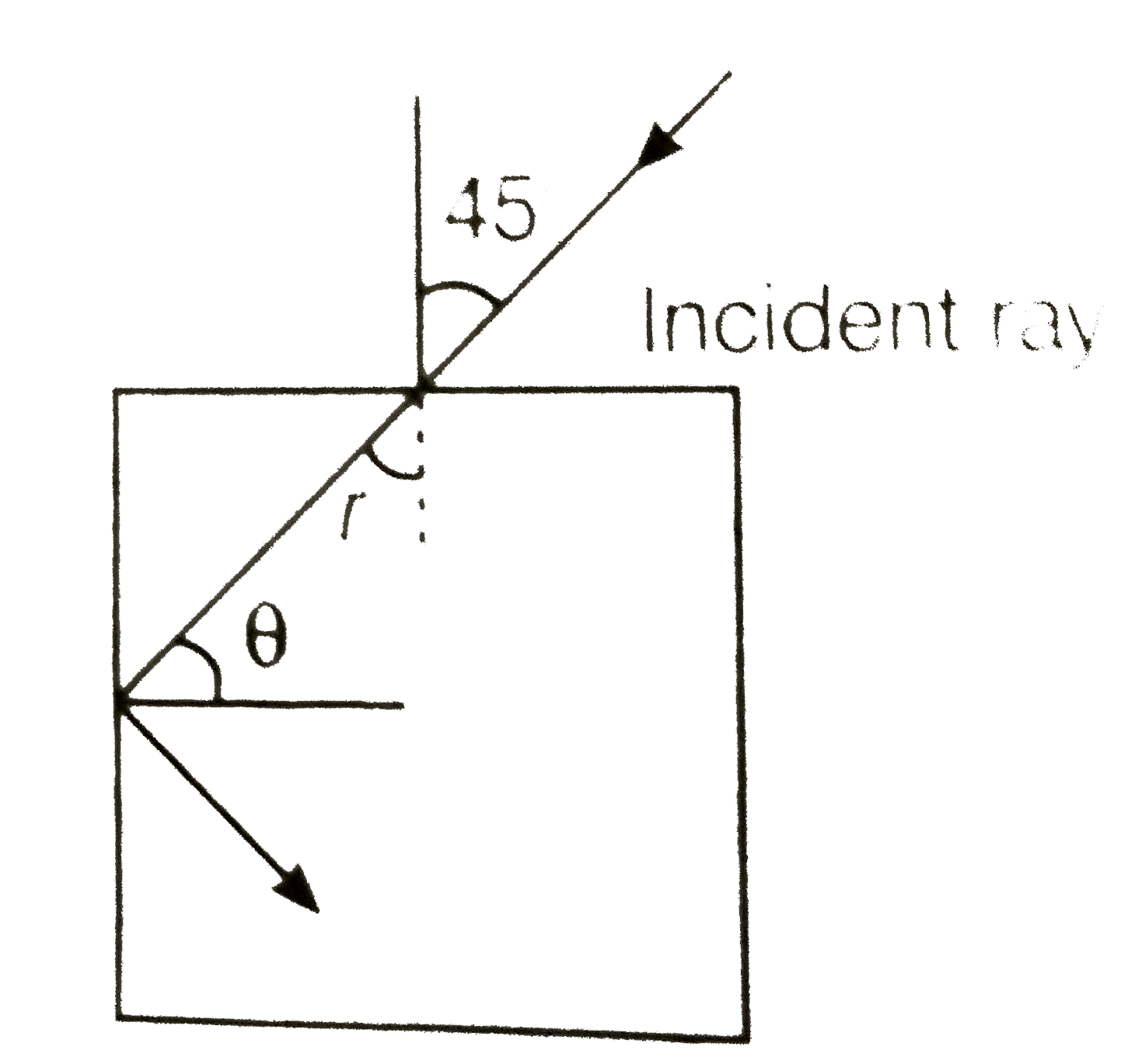
cosθ=3λ/2d
cosθ=λ/4d
secθ−cosθ=λ/d
secθ−cosθ=4λ/d
The correct Answer is:B
Path difference between the two rays is given by
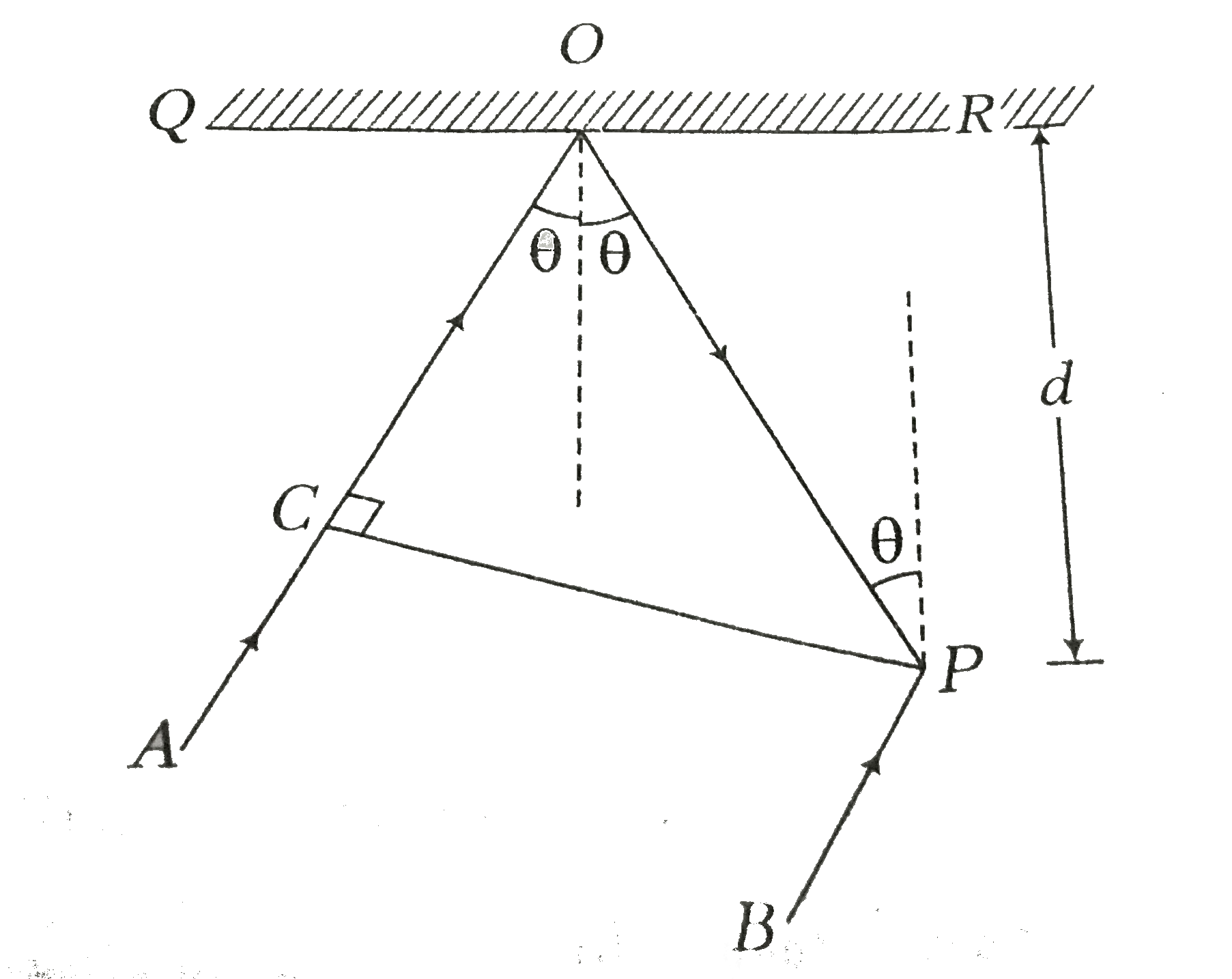
Δ=CO+PO
∵PR=d
So, PO=dsecthetha
and CO=POcos2θ=dsecθcos2θ
So, Δ=(dsecθ+dsecθcos2θ)
Phase difference between two rays is ϕ=π (as one ray is reflected one and another is direct)
Now, for constructive interference path difference should be even multiple of half wavelength
i.e., Δ=λ/2,3λ/2
So, dsecθ+dsecθcos2θ=λ2
or dsecθ(1+cos2θ)=λ2
or dsecθ(2cos2θ)=λ2
∴cosθ=λ/4d
Topper's Solved these Questions
- WAVE OPTICSBOOK - DC PANDEY ENGLISHCHAPTER - WAVE OPTICSEXERCISE - Assertion reason
8 Videos
- WAVE OPTICSBOOK - DC PANDEY ENGLISHCHAPTER - WAVE OPTICSEXERCISE - match column
4 Videos
- WAVE OPTICSBOOK - DC PANDEY ENGLISHCHAPTER - WAVE OPTICSEXERCISE - Check point
65 Videos
- SOLVED PAPERS 2018BOOK - DC PANDEY ENGLISHCHAPTER - SOLVED PAPERS 2018EXERCISE - JIPMER
22 Videos
Similar Questions
For a given incident ray as shown in Fig., the condition of total internal reflection of ray will be satisfied if the refractive index of the block will be.
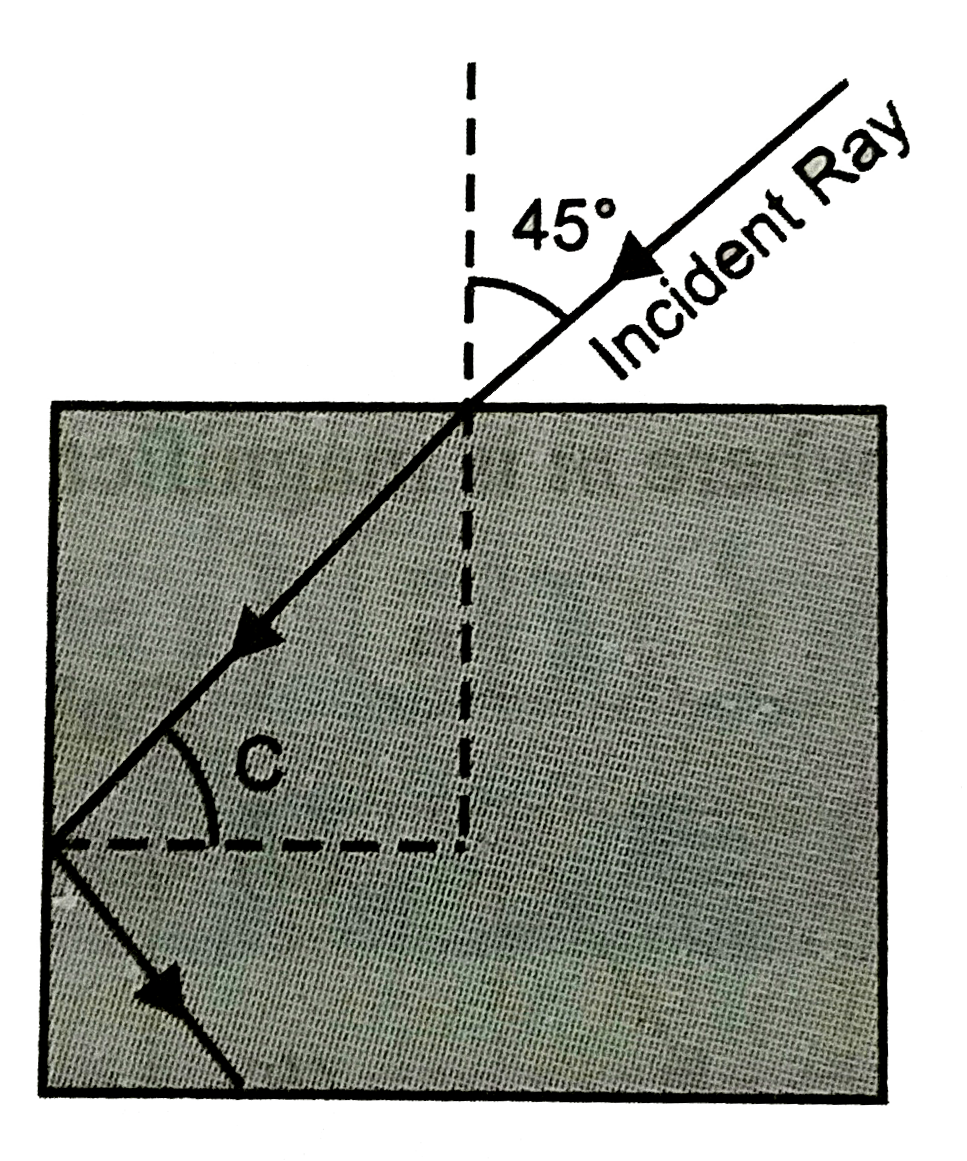 .
.
View SolutionUnder what conditions is the phenomenon of total internal reflection between the critical angle of incidence and the refractive index of the medium.
View SolutionAt what angle should a ray of light be incident on the face of a prism of refracting angle 60∘ so that it just suffers total internal reflection at the other face ? The refractive index of the prism is 1.524.
View SolutionA cubical block of glass of refractive index n1 is in contact with the surface of water of refractive index n2. A beam of light is incident on vertical face of the block. After refraction a total internal reflection at the base and refraction at the opposite face take place. The ray emerges at angle θ as shown. The value of θ is given by
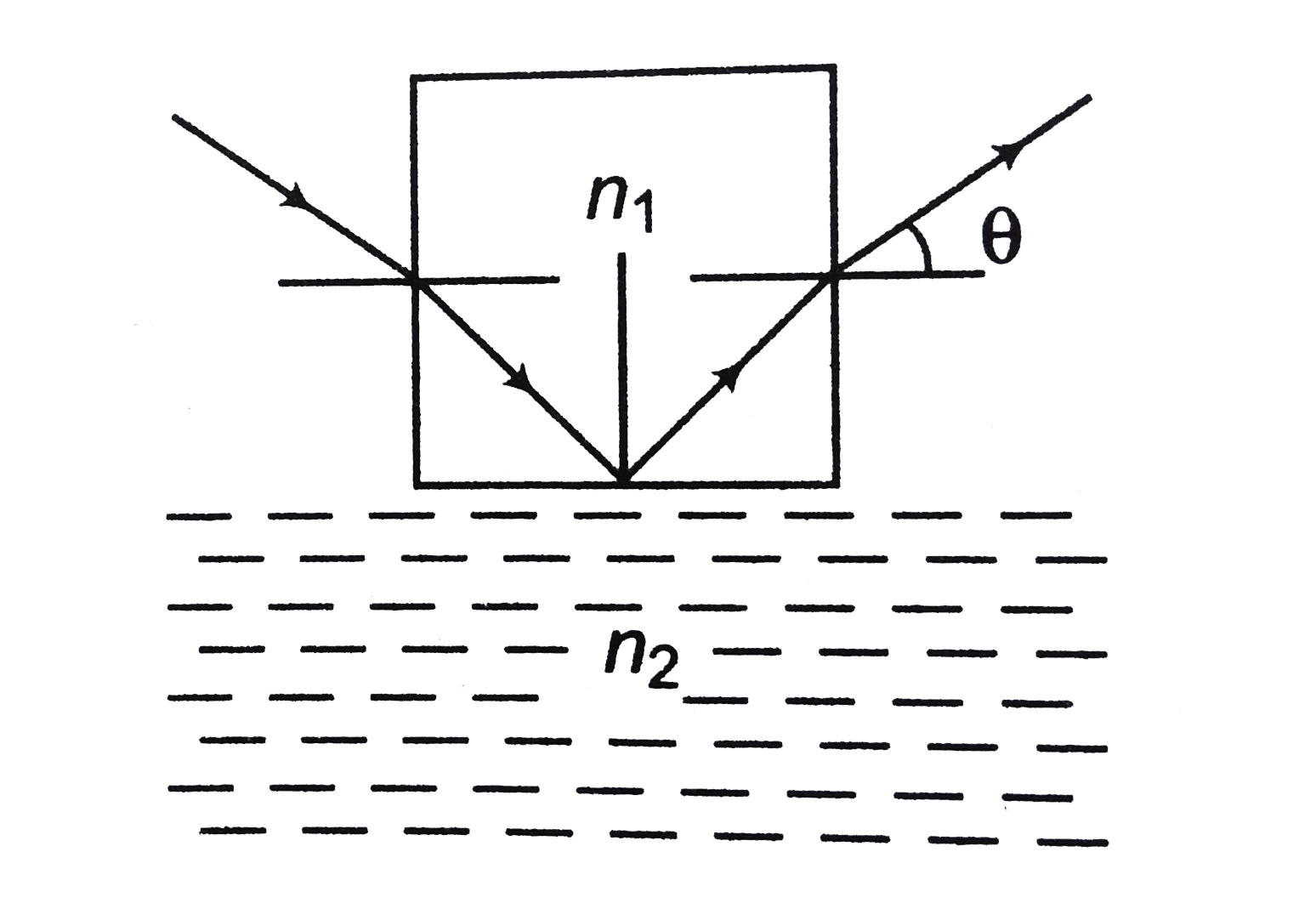
View SolutionA ray of light strikes a plane mirror at an angle of incidence 45∘ as shown in Figure . After reflection,l the ray passes through a prism of refractive indes 1.5 whos apex angle is 4∘. Through what angle must the mirror be rotated it total deviation of the ray be 90∘ ?
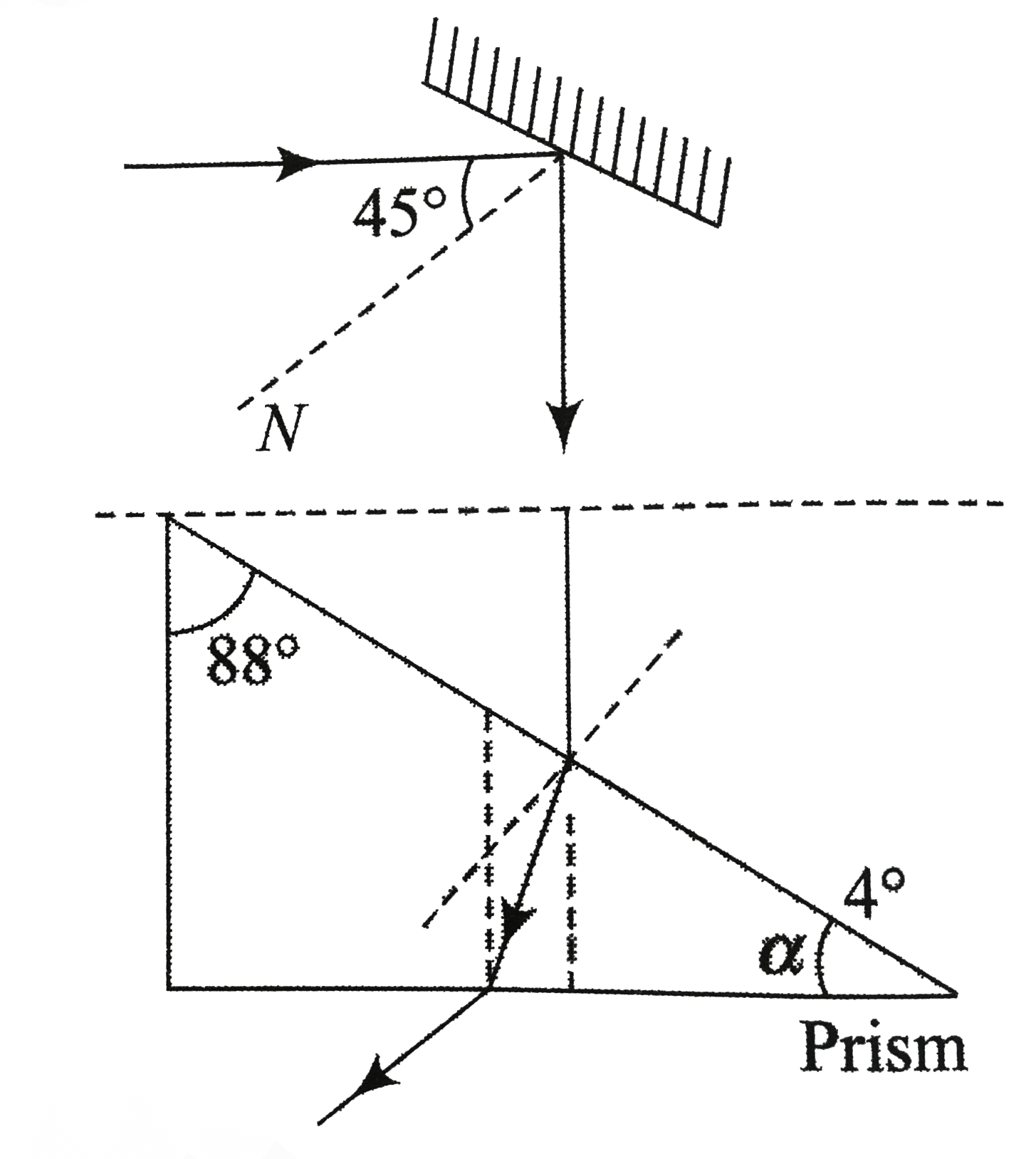
View SolutionA light ray moving in medium-I (of refractive index n1) is incident on interface of two media and it is totally internally reflected at the interface. Now, refractive index n2 of medium-II is decreased, then
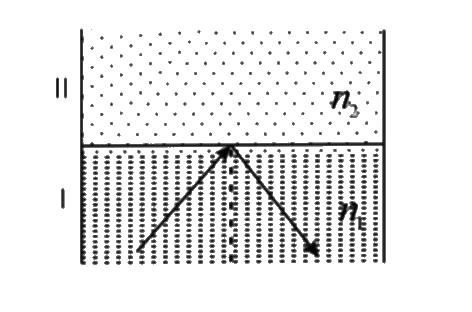
View SolutionA ray of light is incident on the left vertical face of glass cube of refractive index n2, as shown in figure. The plane of incidence is the plane of the page, and the cube is surrounded by liquid (refractive index=n1). What is the largest angle of incidence θ1 for which total internal reflection occurs at the top surfaces?

View SolutionA ray of light AO is incident on a diverging lens as shown in figure. The focal plane of the lens is also given. The possible direction of the refracted ray will be

View Solution
A ray of light incident on one of the face of a prism as shown. After refraction through this surface ray is incident on base of the prism. The refractive index of the prism is √3. The net deviation of the ray due to prism is
View SolutionThe path of a ray of light passing through an equilateral glass prism ABC is shown in figure. The ray of light is incident on face BC at the critical angle for just total internal reflection. The total internal reflection. The total angle of deviation after the refraction at face AC is 108∘. Calculate the refractive index of the glass.
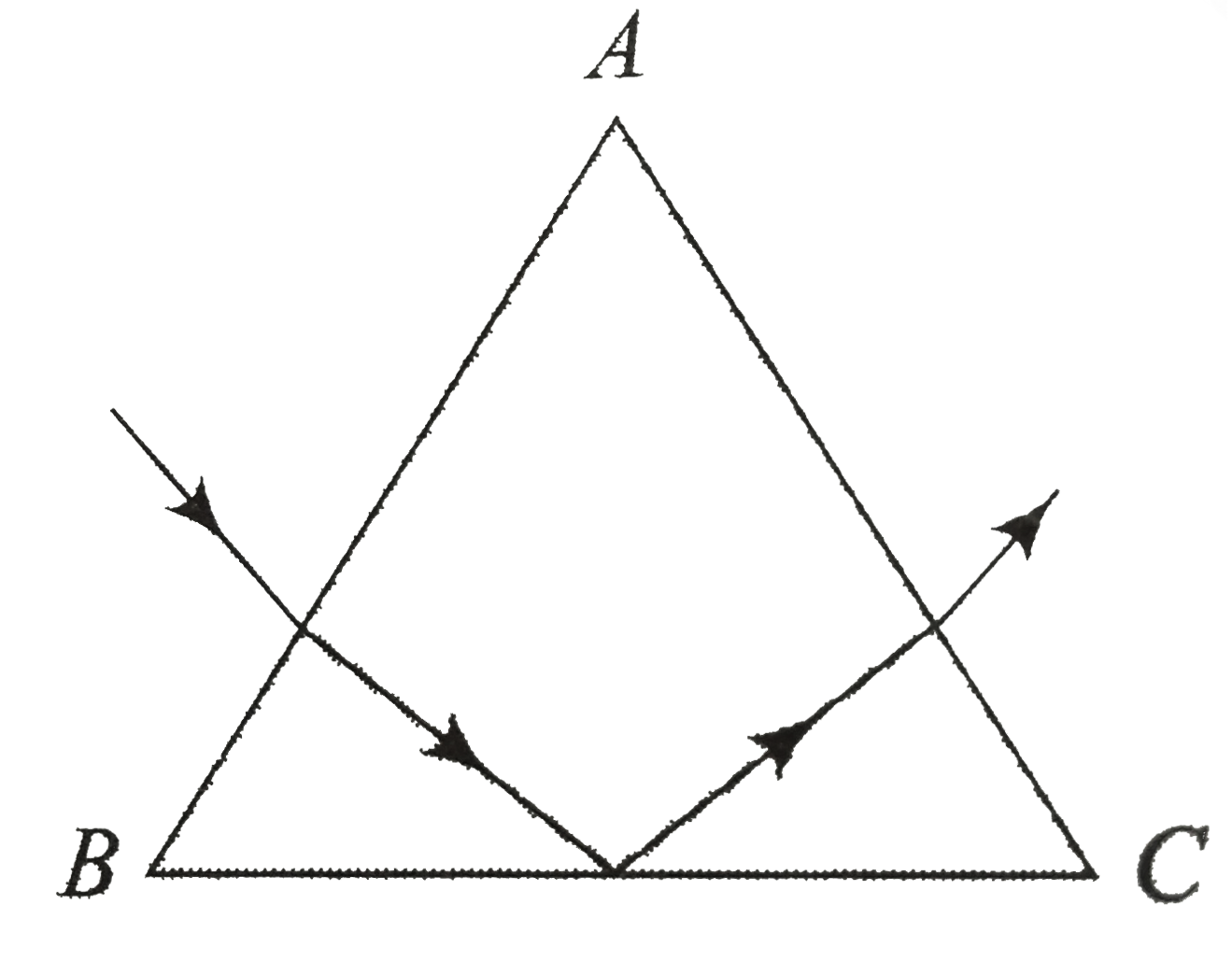
View Solution
